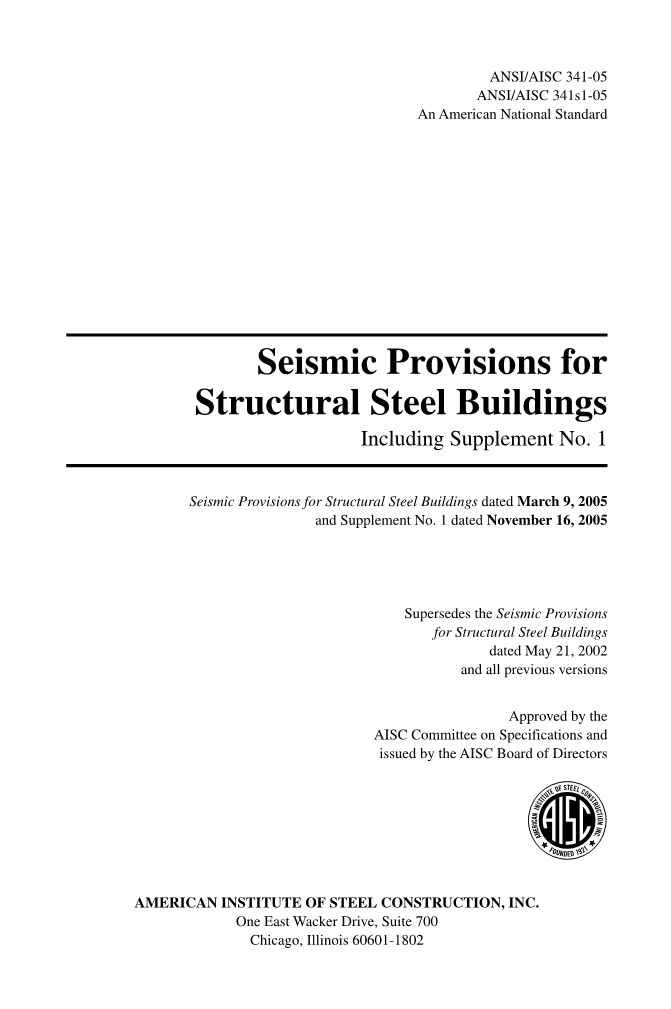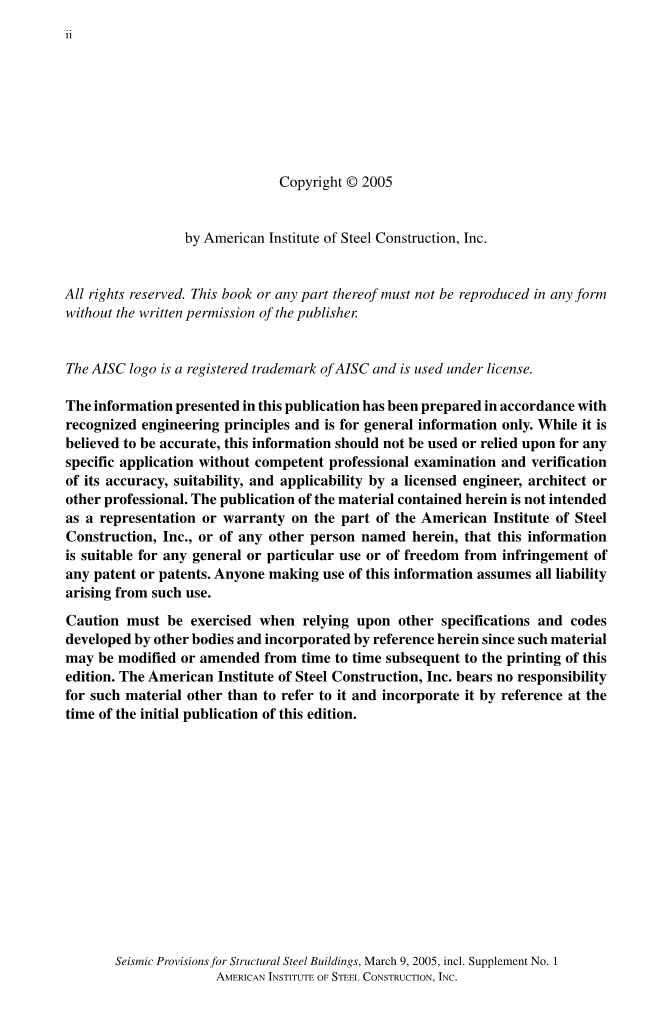

英语原文共 333 页,剩余内容已隐藏,支付完成后下载完整资料
附录B 英文文献翻译(原文):
The required strength of column splices in the seismic load resisting system (SLRS) shall equal the required strength of the columns, including that determined from Sections 8.3, 9.9, 10.9, 11.9, 13.5 and 16.5b.
In addition, welded column splices that are subject to a calculated net tensile load effect determined using the load combinations stipulated by the applicable building code including the amplified seismic load, shall satisfy both of the following requirements:
(1) The available strength of partial-joint-penetration (PJP) groove welded joints, if used, shall be at least equal to 200 percent of the required strength.
(2) The available strength for each flange splice shall be at least equal to 0.5 RyFyAf (LRFD) or (0.5/1.5)RyFyAf (ASD), as appropriate, where RyFy is the expected yield stress of the column material and Af is the flange area of the smaller column connected.
Beveled transitions are not required when changes in thickness and width of flanges and webs occur in column splices where PJP groove welded joints are used.
Column web splices shall be either bolted or welded, or welded to one column and bolted to the other. In moment frames using bolted splices, plates or channels shall be used on both sides of the column web.
The centerline of column splices made with fillet welds or partial-joint-penetration groove welds shall be located 4 ft (1.2 m) or more away from the beam-to-column connections. When the column clear height between beam-to-column connections is less than 8 ft (2.4 m), splices shall be at half the clear height.
8.4b Columns Not Part of the Seismic Load Resisting System
Splices of columns that are not a part of the SLRS shall satisfy the following:
- Splices shall be located 4 ft (1.2 m) or more away from the beam-to-column connections. When the column clear height between beam-to-column connections is less than 8 ft (2.4 m), splices shall be at half the clear height.
- The required shear strength of column splices with respect to both orthogonal axes of the column shall be Mpc /H (LRFD) or Mpc /1.5H (ASD), as appropriate, where Mpc is the lesser nominal plastic flexural strength of the column sections for the direction in question, and H is the story height.
8.5. Column Bases
The required strength of column bases shall be calculated in accordance with Sections 8.5a, 8.5b, and 8.5c. The available strength of anchor rods shall be determined in accordance with Specification Section J3.
The available strength of concrete elements at the column base, including anchor rod embedment and reinforcing steel, shall be in accordance with ACI 318, Appendix D.
User Note: When using concrete reinforcing steel as part of the anchorage embedment design, it is important to understand the anchor failure modes and provide reinforcement that is developed on both sides of the expected failure surface. See ACI 318, Appendix D, Figure RD.4.1 and Section D.4.2.1, including Commentary.
Exception: The special requirements in ACI 318, Appendix D, for “regions of moderate or high seismic risk, or for structures assigned to intermediate or high seismic performance or design categories” need not be applied.
8.5a Required Axial Strength
The required axial strength of column bases, including their attachment to the foundation, shall be the summation of the vertical components of the required strengths of the steel elements that are connected to the column base.
8.5b. Required Shear Strength
The required shear strength of column bases, including their attachments to the foundations, shall be the summation of the horizontal component of the required strengths of the steel elements that are connected to the column base as follows:
- For diagonal bracing, the horizontal component shall be determined from the required strength of bracing connections for the seismic load resisting system (SLRS).
- For columns, the horizontal component shall be at least equal to the lesser of the following:
- 2Ry Fy Zx /H (LRFD) or (2/1.5) Ry Fy Zx /H (ASD), as appropriate, of the column where.
H = height of story, which may be taken as the distance between the centerline of floor framing at each of the levels above and below, or the distance between the top of floor slabs at each of the levels above and below, in. (mm)
- The shear calculated using the load combinations of the applicable building code, including the amplified seismic load.
8.5c. Required Flexural Strength
The required flexural strength of column bases, including their attachment to the foundation, shall be the summation of the required strengths of the steel elements that are connected to the column base as follows:
(1)For diagonal bracing, the required flexural strength shall be at least equal to the required strength of bracing connections for the SLRS.
(2) For columns, the required flexural strength shall be at least equal to the lesser of the following:
(a) 1.1Ry Fy Z (LRFD) or (1.1/1.5)Ry Fy Z (ASD), as appropriate, of the column or
(b) the moment calculated using the load combinations of the applicable building code, including the amplified seismic load.
8.6. H-Piles
8.6a. Design of H-Piles
Design of H-piles shall comply with the provisions of the Specification regarding design of members subjected to combined loads. H-piles shall meet the requirements of Section 8.2b.
8.6b. Battered H-Piles
If battered (sloped) and vertical piles are used in a pile group, the vertical piles shall be designed to support th
剩余内容已隐藏,支付完成后下载完整资料
资料编号:[467841],资料为PDF文档或Word文档,PDF文档可免费转换为Word


